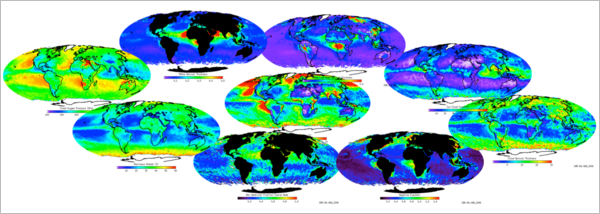Release of PARASOL-MODIS unique synergy products
Besides improvements brought to the standard POLDER/PARASOL Level-2 science codes (see below), a new science code has been developed, tested and validated. This code, named PM-L2, is based on the synergy between POLDER/PARASOL and MODIS/Aqua observations. Products are generated and distributed since April 2016. The output data sets are in the same grid as PARASOL standard products, at native 1/18 deg. spatial resolution for the cloud parameters and at 1/6 deg. resolution for the aerosol parameters. The algorithm makes synergetic use of the well-known specific capabilities of each sensor in the retrieval scheme, i.e. polarization for PARASOL, and large-range spectral measurements for MODIS, thus alleviating individual methodological limitations. This concept was underused thus far.
The new data sets enable thorough analyses of cloud properties derived from each sensor individually (cloud cover, optical depth, thermodynamic phase). More importantly, they enable new parameters to emerge or to be derived with a higher level of confidence: cloud thermodynamic phase and aerosol optical thickness above cloud layers.
Coincident colocated observations from other sensors of the A-Train constellation were also used (CALIPSO/CALIOP and CloudSat) to validate the cloud oxygen pressures and geometrical extent.
The new aerosol and cloud parameters from PM-L2 are:
Cloud classification (upcoming documentation)
Cloud top pressure (upcoming documentation)
Cloud geometrical thickness (upcoming documentation)








